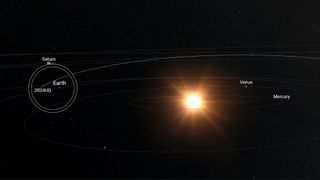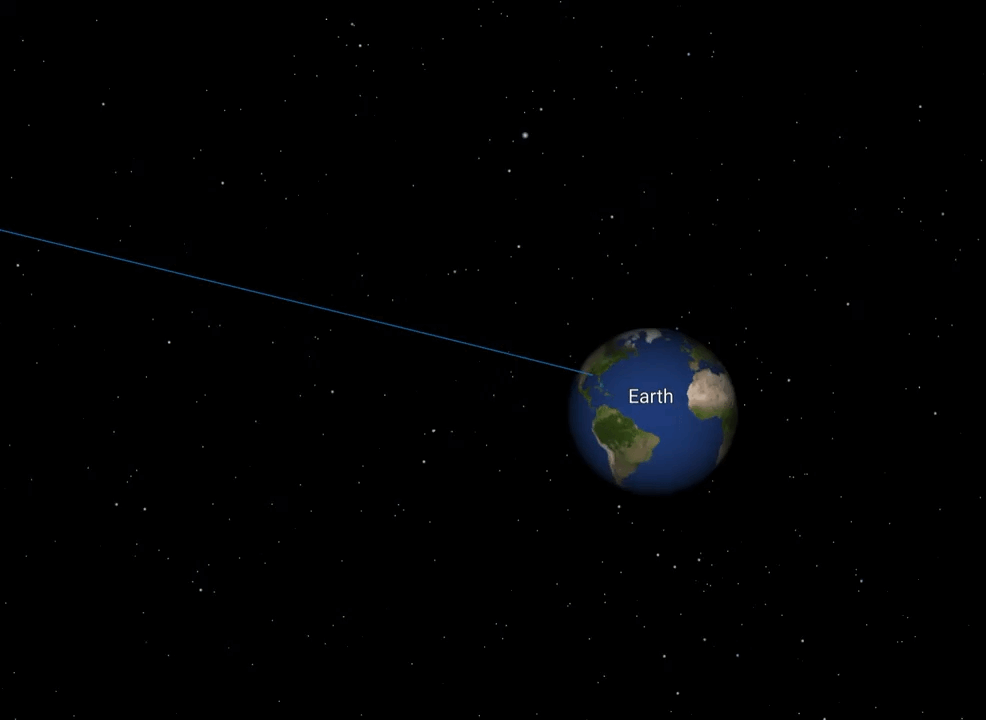An asteroid hit Earth just hours after being detected. It was the 3rd 'imminent impactor' of 2024
"By the time the astrometry reached the impact monitoring systems, the impact had already happened."

Last month, an asteroid impacted Earth's atmosphere just hours after being detected — somehow, it managed to circumvent impact monitoring systems during its approach to our planet. However, on the bright side, the object measured just 3 feet (1 meter) in diameter and posed very little threat to anything on Earth's surface.
This asteroid, designated 2024 UQ, was first discovered on Oct. 22 by the Asteroid Terrestrial-impact Last Alert System (ATLAS) survey in Hawaii, a network of four telescopes that scan the sky for moving objects that might be space rocks on a collision course with Earth. Two hours later, the asteroid burned up over the Pacific Ocean near California, making it an "imminent impactor."
The small amount of time between detection and impact means impact monitoring systems, operated by the European Space Agency's Near-Earth Object Coordination Center, didn't receive tracking data about the incoming asteroid until after it struck Earth, according to the center's November 2024 newsletter.
"ATLAS survey obtained images that included detections of a small object in a high-probability collision course. However, due to the location of the object near the edge of two adjacent fields, the candidate was recognized as a moving object only a few hours later," ESA wrote in the newsletter.
"By the time the astrometry reached the impact monitoring systems, the impact had already happened."
ESA's NEO Coordination Center (NEOCC) says flashes were detected by the National Oceanic and Atmospheric Administration's GOES weather satellites and the Catalina Sky Survey, a NASA project that uses a series of telescopes to search for asteroids and comets in our celestial neighborhood. These flashes were enough to confirm asteroid 2024 UQ's impact as well as its trajectory.

According to ESA, the asteroid was the third imminent impactor detected this year. As for the two other asteroids that were been detected within hours of impacting Earth in 2024, the first is known as 2024 BX1. It measured around 3.3 feet wide (1 meter) and burned up harmlessly over Berlin, Germany in January. The other, 2024 RW1, exploded over the Philippines on Sept. 4.
Get the Space.com Newsletter
Breaking space news, the latest updates on rocket launches, skywatching events and more!
Multiple people throughout the island nation caught the resultant fireball on video:
A few pictures and videos of 2024 WR1 ☄️, while waiting for more physical properies of the small near Earth asteroid and associated fireball...https://t.co/1Yycwvd8b4 pic.twitter.com/fCXeIhDjo4September 4, 2024
Planetary defense efforts that aim to catalog the myriad of space rocks in our neck of the cosmic woods have become a major priority for space agencies worldwide. Aside from the ATLAS survey, Catalina Sky Survey, ESA's NEOCC and other projects like them, NASA is developing a new infrared telescope known as NEO Surveyor to hunt for potentially threatening near-Earth objects.
But it's not all just about detection and tracking. Space agencies are testing methods of redirecting incoming asteroids should the need ever arise. In 2022, NASA's DART mission crashed an impactor into a double asteroid system in an attempt to change its trajectory (the endeavor was a success). China is also developing its own mission to deflect an asteroid by 2030.
Join our Space Forums to keep talking space on the latest missions, night sky and more! And if you have a news tip, correction or comment, let us know at: community@space.com.

Brett is curious about emerging aerospace technologies, alternative launch concepts, military space developments and uncrewed aircraft systems. Brett's work has appeared on Scientific American, The War Zone, Popular Science, the History Channel, Science Discovery and more. Brett has English degrees from Clemson University and the University of North Carolina at Charlotte. In his free time, Brett enjoys skywatching throughout the dark skies of the Appalachian mountains.
-
Bawzman What is the sense of having a impact monitoring system if it doesn't work properly? Okay this small one slipped by, but what if the next one is 100 meters acr oss and it slips by? I kinda know what will happen, im just saying.Reply -
Unclear Engineer Hoping this system does better with bigger "asteroids". Those 1 meter in diameter don't seem to be a threat. And, of course, there a many many more the size of grains of sand that hit Earth every day.Reply
So, how are we doing detecting things big enough to cause real damage on Earth's surface? Things like the one that blew up over Chelyabinsk? That one was estimated to be about 18 meters in diameter. It came at us from a direction that was close to the Sun from our perspective, and was not detected, either. ( See https://en.wikipedia.org/wiki/Chelyabinsk_meteor)